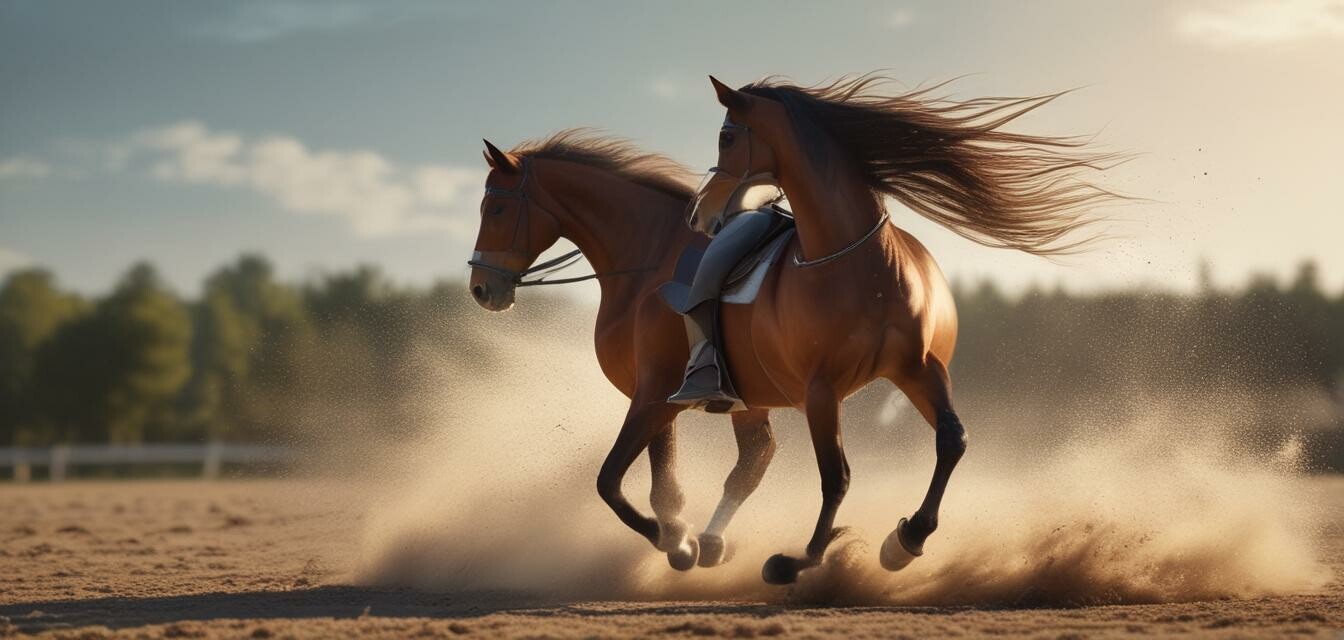
Innovative Training Techniques for Horses
- Emphasis on positive reinforcement and relationship-building between the horse and rider.
- Introduction of technology such as virtual training aids and equine biomechanics.
- Focus on mental stimulation alongside physical training.
- Use of groundwork to enhance communication and trust.
- Incorporation of natural horsemanship principles to foster respect and understanding.
In the rapidly evolving world of horseback riding, training techniques are continuously improving to enhance horse performance, behavior, and rider communication. This article delves into some of the latest innovative training methods that are making waves in the equestrian community. Whether you're a seasoned rider or just starting out, understanding these techniques can significantly impact your riding experience.
Understanding the Evolution of Horse Training
The traditional methods of horse training have begun to merge with modern psychology insights and technological advancements. The aim is to create a more effective and empathetic way to train horses, ensuring their wellbeing while enhancing their capabilities. Here are some factors influencing the evolution of training techniques:
- Scientific understanding of animal behavior.
- Development of humane training methods.
- Integration of tools and technology in training processes.
Positive Reinforcement Techniques
Positive reinforcement is a modern training approach that focuses on rewarding desired behaviors rather than punishing unwanted ones. This technique is centered around building a strong bond between the horse and rider.
| Positive Reinforcement Techniques | Benefits |
|---|---|
| Treats or Clickers | Encourages repeat performance and builds trust. |
| Verbal Praise | Strengthens the emotional bond. |
| Patting and Grooming | Creates a sense of safety and comfort. |
Incorporating Technology in Training
Technology is also changing the landscape of horse training. Innovations such as virtual training aids allow riders to simulate real-life training scenarios from the comfort of their homes. Here are some technological advances in horse training:
- Biomechanical Analysis: Using motion-capture technology to study horse movements helps in understanding their biomechanical needs.
- Wearable Devices: These can track performance and health metrics, allowing for more informed training programs.
- Virtual Reality Training: Offers the opportunity for riders to enhance their skills through immersive experiences.
Groundwork: The Foundation of Training
Groundwork is an essential aspect of horse training that establishes communication and trust before mounting. This technique lays the groundwork for understanding, allowing riders to teach their horses to respond effectively.
| Groundwork Techniques | Effects on Training |
|---|---|
| Desensitization Exercises | Helps in reducing anxiety and fear. |
| Leading and Lunging | Improves responsiveness and communication skills. |
| Circle Work | Enhances balance and control. |
Nurturing a Balanced Training Program
A successful training program is well-balanced and incorporates various techniques. It combines physical training with mental stimulation and relaxation exercises. Here’s how you can create a balanced training protocol:
- Include regular breaks to avoid fatigue.
- Incorporate both riding and groundwork sessions.
- Utilize varied environments to keep the training engaging.
- Work towards mutual goals with the horse to develop respect.
Natural Horsemanship Principles
Natural horsemanship focuses on understanding the horse's natural instincts and behaviors. This approach fosters a respectful and communicative relationship between horse and rider.
Pros
- Enhances rider-horse communication.
- Results in a more relaxed and willing horse.
- Encourages empathy and understanding.
Cons
- Can require more time and patience than traditional methods.
- May demand additional training for the rider.
The Future of Horse Training
As technology continues to play a role in horseback riding, we can anticipate even more innovative training techniques on the horizon. Continuing education for both riders and trainers will be essential to stay updated on the latest advancements in training methodologies.
For more tips on improving your riding experience, check out our Rider Tips and Advice section. You'll find valuable insights that can enhance your relationship with your horse.
Conclusion
Exploring innovative training techniques can significantly improve your and your horse’s performance and communication. By incorporating modern science, technology, and empathetic training approaches, you’ll likely notice positive changes in your horse’s behavior and willingness to learn. Stay engaged with our blog for the latest insights into the world of horseback riding and the equestrian community. To learn more about related products, visit our Equestrian Gear page.
